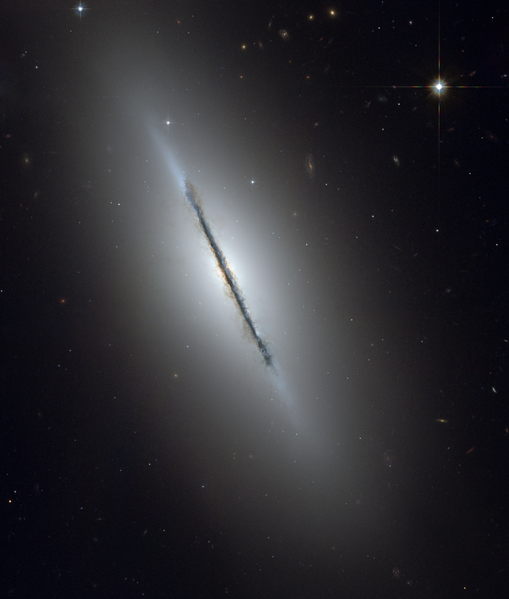Fayl:Ngc5866 hst big.png

Bu prevyuning hajmi: 509 × 599 piksel. Boshqa oʻlchamlari: 204 × 240 piksel | 408 × 480 piksel | 652 × 768 piksel | 870 × 1 024 piksel | 1 739 × 2 048 piksel | 3 190 × 3 756 piksel.
Asl fayl (3 190 × 3 756 piksel, fayl hajmi: 25,78 MB, MIME tipi: image/png)
Fayl tarixi
Faylning biror paytdagi holatini koʻrish uchun tegishli sana/vaqtga bosingiz.
| Sana/Vaqt | Miniatura | Oʻlchamlari | Foydalanuvchi | Izoh | |
|---|---|---|---|---|---|
| joriy | 18:38, 2009-yil 16-fevral |  | 3 190 × 3 756 (25,78 MB) | Spencer | {{Information |Description={{en|1=From original NASA press release: :This is a unique view of the disk galaxy en:NGC 5866 tilted nearly edge-on to our line-of-sight. Hubble's sharp vision reveals a crisp dust lane dividing |
Fayllarga ishoratlar
Bu faylga quyidagi 2 sahifalar bogʻlangan:
Faylning global foydalanilishi
Ushbu fayl quyidagi vikilarda ishlatilyapti:
- ab.wikipedia.org loyihasida foydalanilishi
- ace.wikipedia.org loyihasida foydalanilishi
- af.wikipedia.org loyihasida foydalanilishi
- af.wikibooks.org loyihasida foydalanilishi
- af.wikiquote.org loyihasida foydalanilishi
- af.wiktionary.org loyihasida foydalanilishi
- ak.wikipedia.org loyihasida foydalanilishi
- als.wikipedia.org loyihasida foydalanilishi
- am.wikipedia.org loyihasida foydalanilishi
- am.wiktionary.org loyihasida foydalanilishi
- ang.wikipedia.org loyihasida foydalanilishi
- ang.wiktionary.org loyihasida foydalanilishi
- an.wikipedia.org loyihasida foydalanilishi
- an.wiktionary.org loyihasida foydalanilishi
- arc.wikipedia.org loyihasida foydalanilishi
- ar.wikipedia.org loyihasida foydalanilishi
- ar.wikibooks.org loyihasida foydalanilishi
- ar.wikinews.org loyihasida foydalanilishi
- ar.wikiquote.org loyihasida foydalanilishi
- ar.wikisource.org loyihasida foydalanilishi
- ar.wikiversity.org loyihasida foydalanilishi
- ar.wiktionary.org loyihasida foydalanilishi
- arz.wikipedia.org loyihasida foydalanilishi
- ast.wikipedia.org loyihasida foydalanilishi
- ast.wiktionary.org loyihasida foydalanilishi
- as.wikipedia.org loyihasida foydalanilishi
- av.wikipedia.org loyihasida foydalanilishi
- ay.wikipedia.org loyihasida foydalanilishi
- ay.wiktionary.org loyihasida foydalanilishi
- az.wikipedia.org loyihasida foydalanilishi
- az.wikibooks.org loyihasida foydalanilishi
- az.wikiquote.org loyihasida foydalanilishi
- az.wikisource.org loyihasida foydalanilishi
- az.wiktionary.org loyihasida foydalanilishi
- bat-smg.wikipedia.org loyihasida foydalanilishi
- ba.wikipedia.org loyihasida foydalanilishi
- bcl.wikipedia.org loyihasida foydalanilishi
- be-tarask.wikipedia.org loyihasida foydalanilishi
- beta.wikiversity.org loyihasida foydalanilishi
- be.wikipedia.org loyihasida foydalanilishi
Ushbu faylni koʻproq global foydalanishdan koʻring.